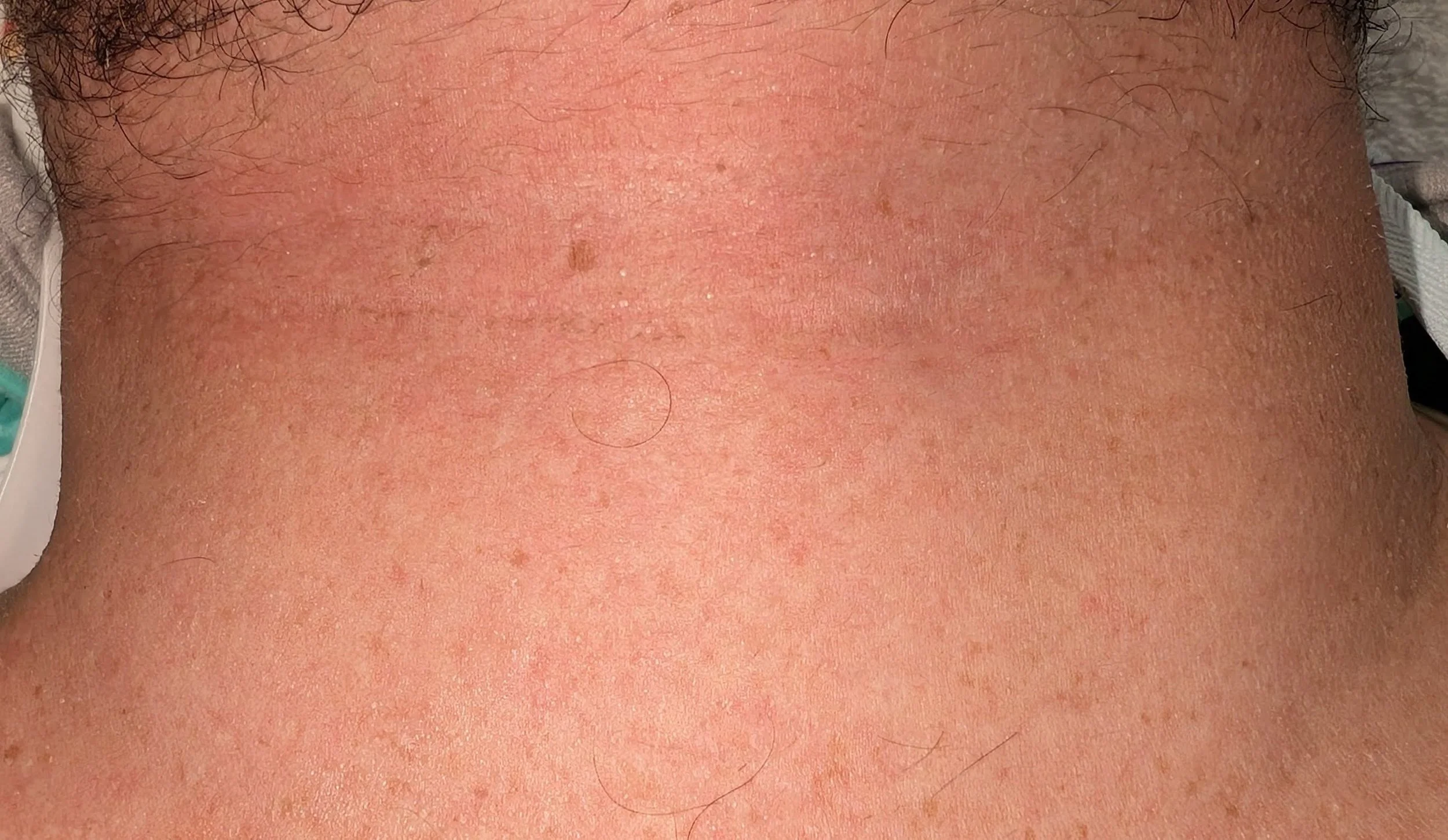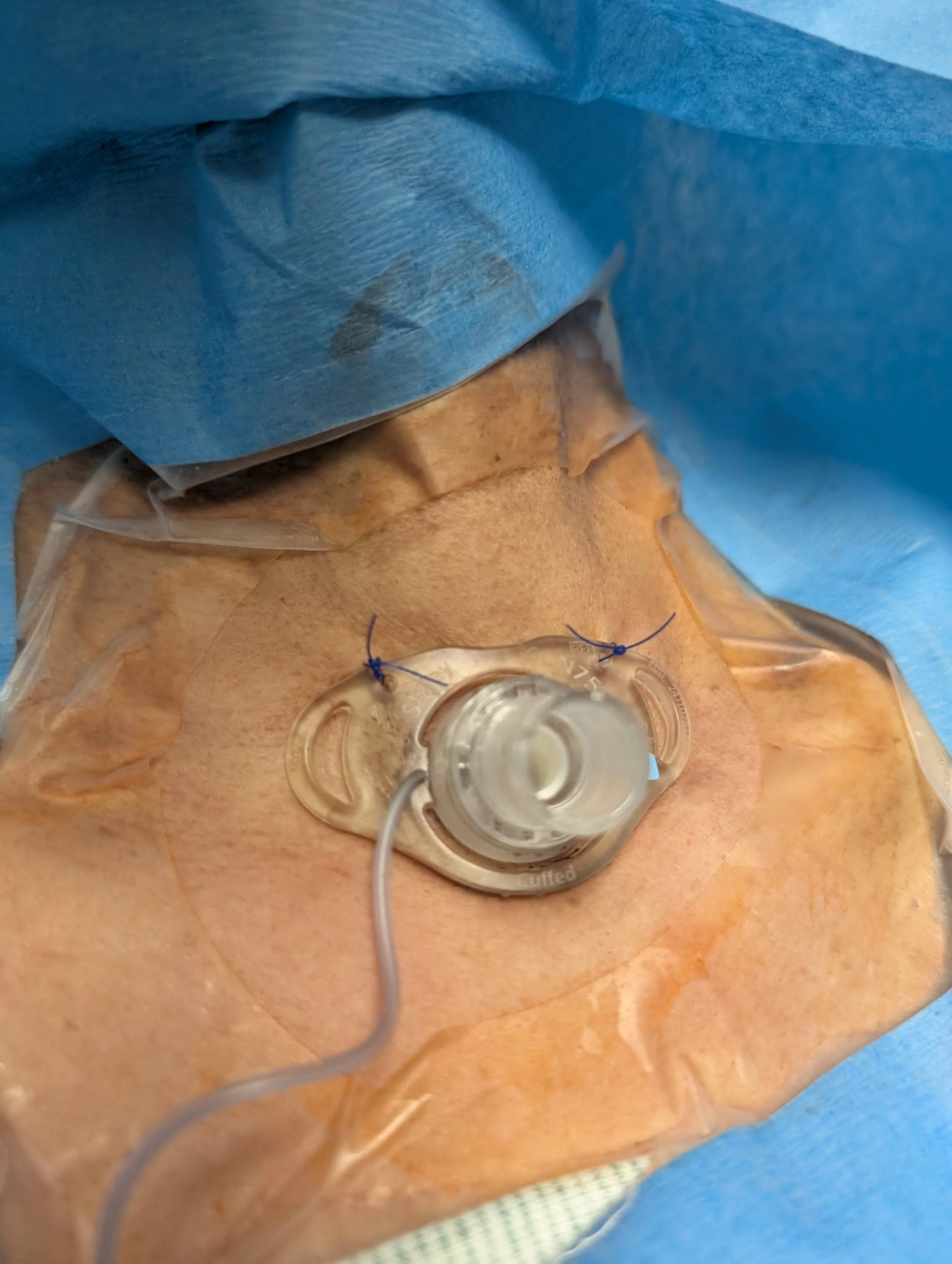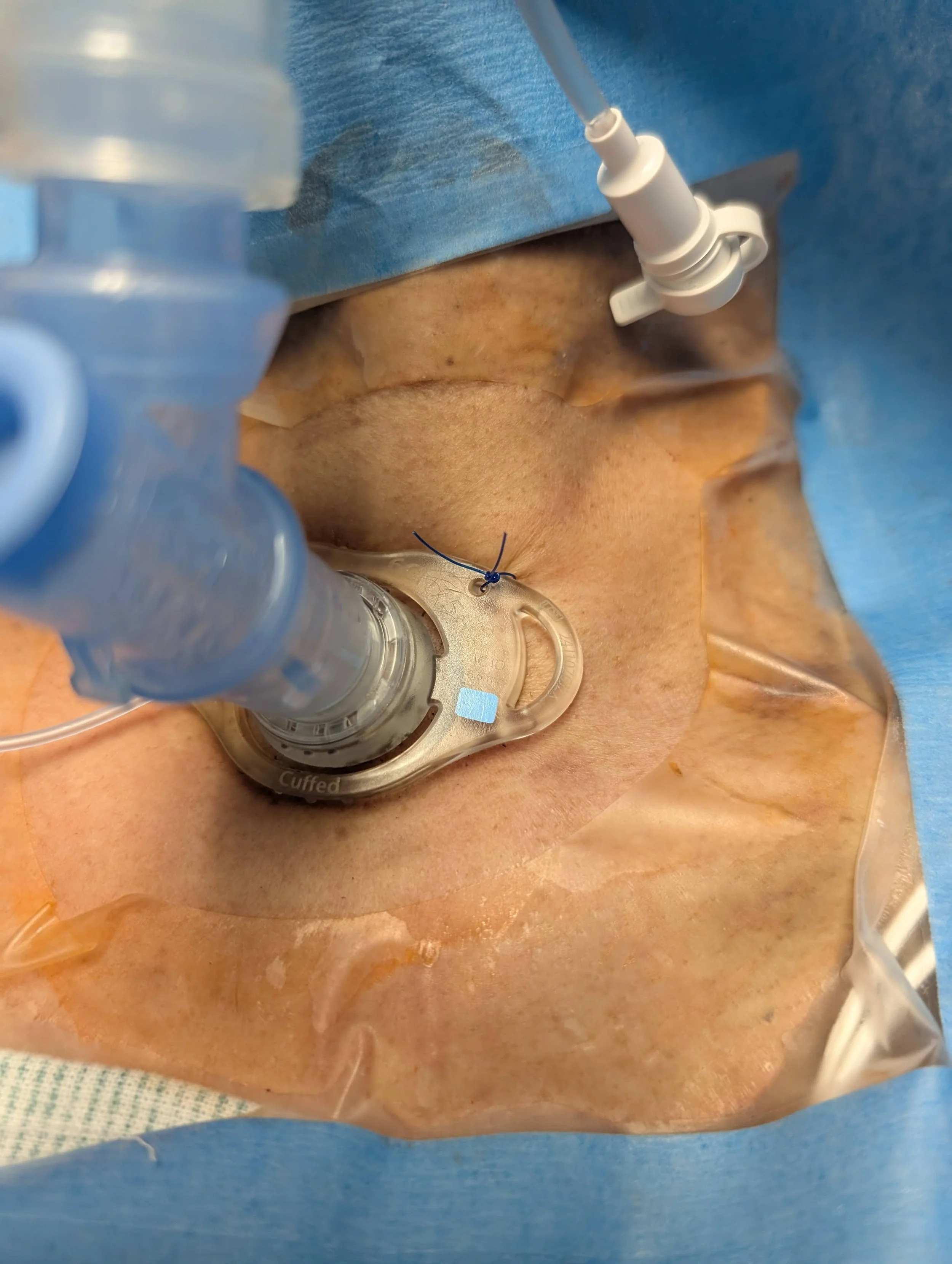Tracheostomy Information
What is a tracheostomy?
A tracheostomy (also commonly referred to as a “trach”) is a small surgical opening created in the front of the neck into the windpipe (trachea). A tube is placed into this opening to help a patient breathe when normal breathing through the mouth or nose is difficult.
Is a tracheostomy permanent?
Not always. Many tracheostomies are temporary and are used only as long as needed for breathing support. In some cases when there is long-term airway or lung disease, it may be permanent.
Is it reversible?
Yes, in majority of the cases. If the underlying breathing problem improves, the tube is removed, and the opening closes. In majority of cases, no other procedure needs to be done to remove it.
Is there scarring after?
Yes, there is usually minimal scarring once the tracheostomy tube is removed and the opening closes. For most patients, the scar is small and fades over time. However, people with darker skin tones may be more likely to develop thicker or raised scars (called keloids). Dr. Khawaja takes special care during the procedure and provides guidance on aftercare to help minimize scarring.
Why would someone need a tracheostomy?
A tracheostomy may be needed if a patient requires long-term breathing support, has an airway blockage, or has severe lung disease that makes normal breathing difficult. Another reason for placing it in some patients is that they have difficulty swallowing as they're recovering from their sickness. If they have difficulty swallowing, secretions are hard to clear from the throat and go down the airway. Having a tracheostomy tube in place allows for clearing the secretions that go down the airway to allow the patient to recover. As their swallowing improves and they can clear their secretions and the patients cough gets stronger, the tracheostomy tube is no longer needed and is removed.
How is a tracheostomy performed?
It is a minor surgical procedure done at the bedside usually in the intensive care unit in which a small opening is made in the neck to place a breathing tube directly into the windpipe. The patient is usually already sedated while on a ventilator and local anesthesia is given into the neck area to numb the site where the tracheostomy tube will be placed.
Will I be able to talk with a tracheostomy?
Many patients can speak with the help of special speaking valves (Passy Muir valve) or once the airway heals enough to allow airflow through the vocal cords.
Can I eat and drink with a tracheostomy?
Yes, once the patient is no longer requiring ventilator support. Once they can breathe on their own, they will get a swallowing evaluation at first to verify that they can swallow safely. Many people are able to eat and drink normally after recovery.
How do I take care of a tracheostomy at home?
Tracheostomies require regular cleaning, suctioning, and care of the surrounding skin. Dr. Khawaja and his team provide detailed instructions and support to help patients manage this safely at home.
Can I shower or swim with a tracheostomy?
Showering is possible with protective covers to keep water out of the tube, but swimming is not safe with a tracheostomy in place.
Will I still be able to smell or taste?
Some patients notice a temporary change in smell or taste because airflow through the nose is reduced, but this often improves with time.
What happens if the tracheostomy tube comes out accidentally?
If the tube comes out, it is important to remain calm and follow the emergency instructions provided by your care team. In many cases, the tube can be reinserted or medical help should be sought immediately.
Can I return to normal activities with a tracheostomy?
Yes. With proper care and guidance, many patients return to daily routines, work, and social activities.








